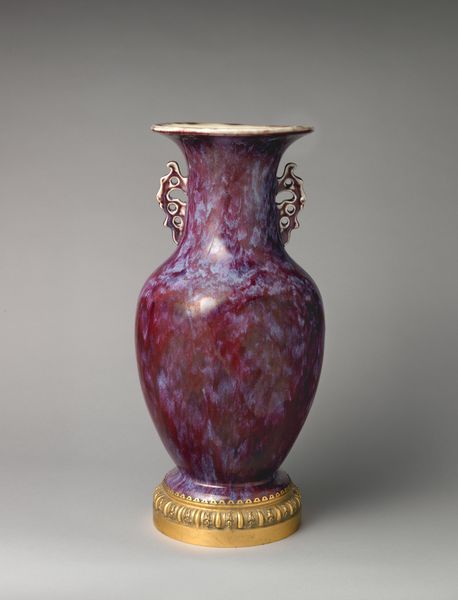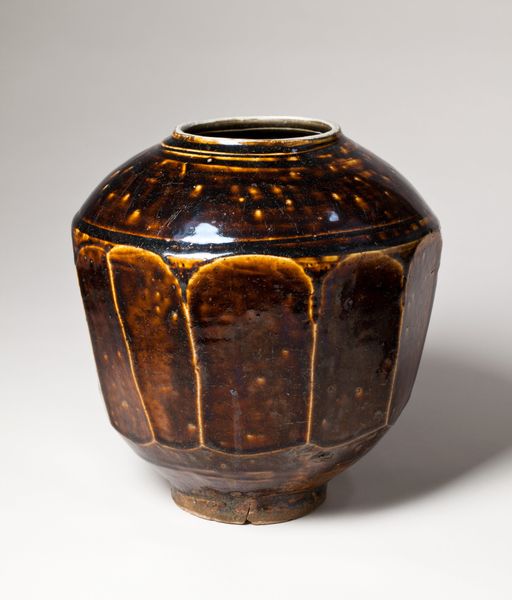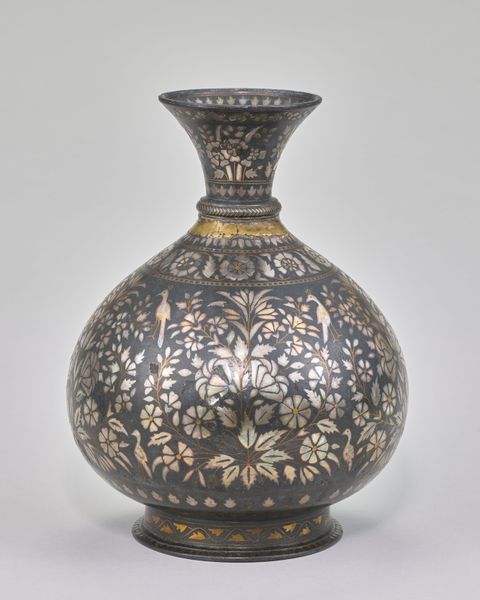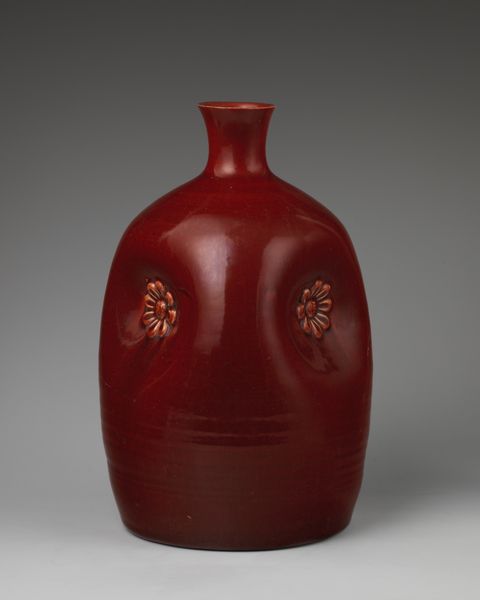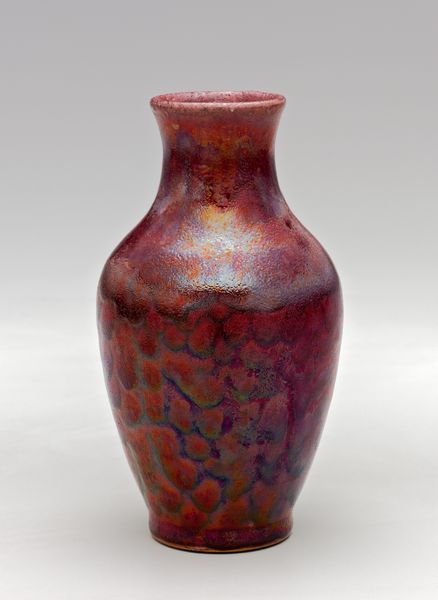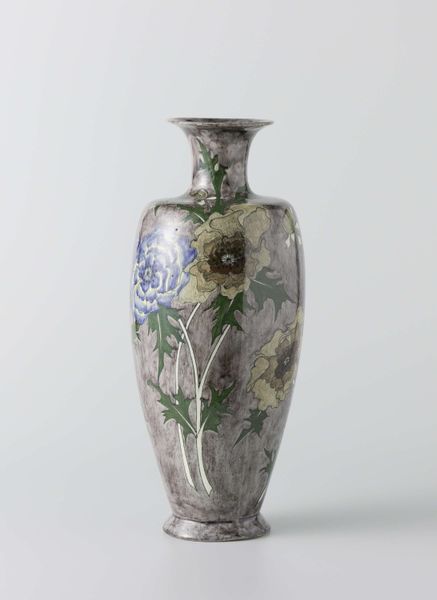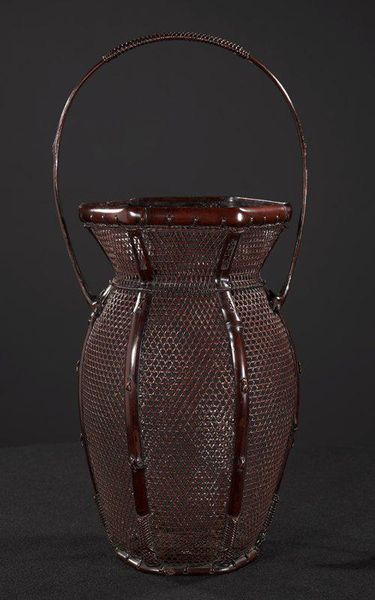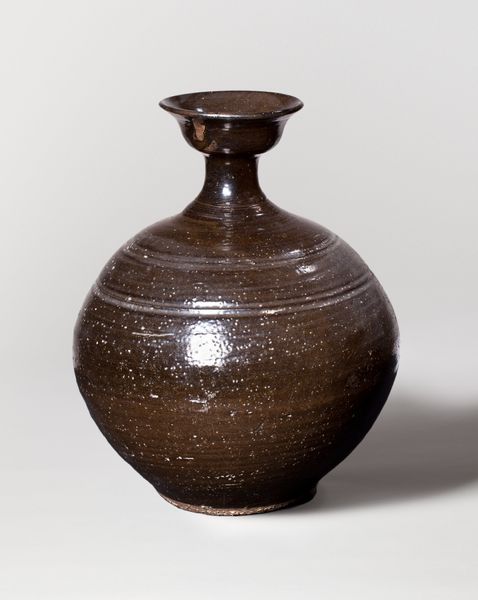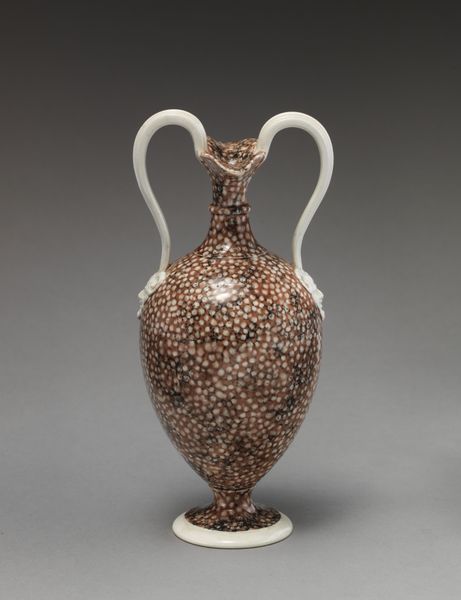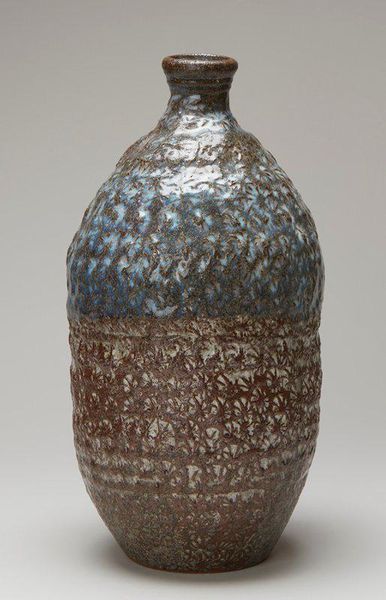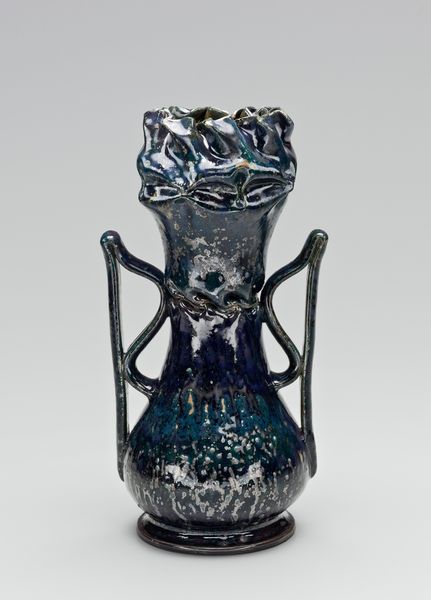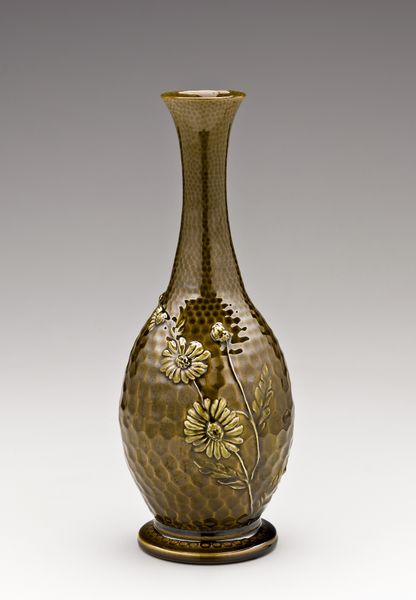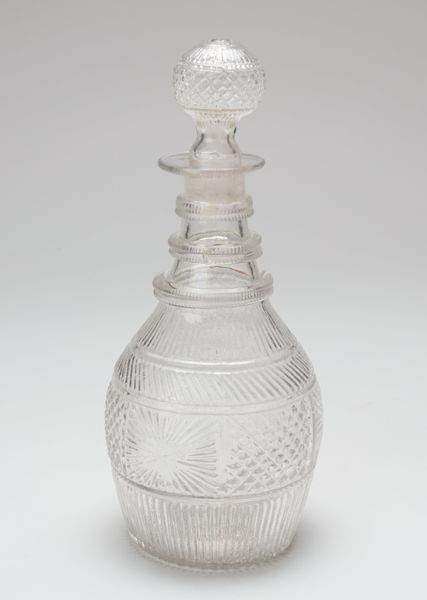
Mosaic glass urn with silver leaf design 1875 - 1885
0:00
0:00
glass, sculpture
#
art-nouveau
#
glass
#
sculpture
#
ceramic
#
decorative-art
Dimensions: diameter at widest point, confirmed: 11 3/4 × 7 1/4 × 7 1/4 in. (29.8 × 18.4 × 18.4 cm)
Copyright: Public Domain
Curator: This intriguing glass urn, a creation of Giuseppe Barovier, was crafted sometime between 1875 and 1885, during a period where the Art Nouveau style was gaining momentum. What are your initial thoughts? Editor: My immediate impression is of opulent decay – the delicate glasswork is undeniably beautiful, but the dark purple and silver create an almost funereal air, don't you think? A relic of a vanished elegance. Curator: Interesting! I see your point. The dark coloration certainly contributes to that mood. Consider, though, the historical context. Barovier was working within a Venetian glassmaking tradition stretching back centuries. Glassware of this caliber affirmed social status. Editor: Yes, luxury as propaganda. This wasn’t just decorative art; it was a statement of wealth, power, and refined taste in a society undergoing rapid industrialization. Were these objects also showcased in prominent international exhibitions, bolstering national pride? Curator: Precisely. And that elaborate mosaic pattern is worth considering for its symbolic power. Repeated floral and geometric motifs suggest abundance and perhaps even a certain cosmic order, rendered delicate through its painstaking assemblage. Editor: I also wonder about the choice of silver leaf. Its reflective properties must have transformed the appearance of this urn in different light, playing with visual perception in very deliberate way. Light and dark were potent psychological tools at the time, suggesting hidden truths. Curator: Good point. It seems almost paradoxical: light suggesting something hidden. What message would Barovier wish to convey, incorporating this psychological tool in this Art Nouveau styled creation? Perhaps a commentary on ephemeral beauty. Editor: Well, seeing it in the broader context of Italian craftsmanship and bourgeois aspiration certainly tempers my initial, somewhat melodramatic reaction. This isn't just a beautiful object, it's a time capsule of late 19th century anxieties and ambitions. Curator: Agreed. There’s a resonance that comes with the passage of time, adding layers of meaning that Barovier couldn’t have possibly imagined. An object, once purely functional and celebratory, evolving into something haunting, evocative.
Comments
No comments
Be the first to comment and join the conversation on the ultimate creative platform.
